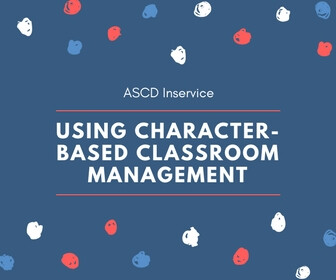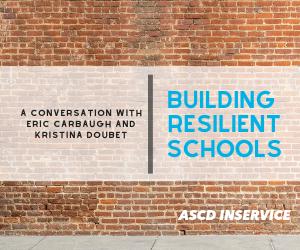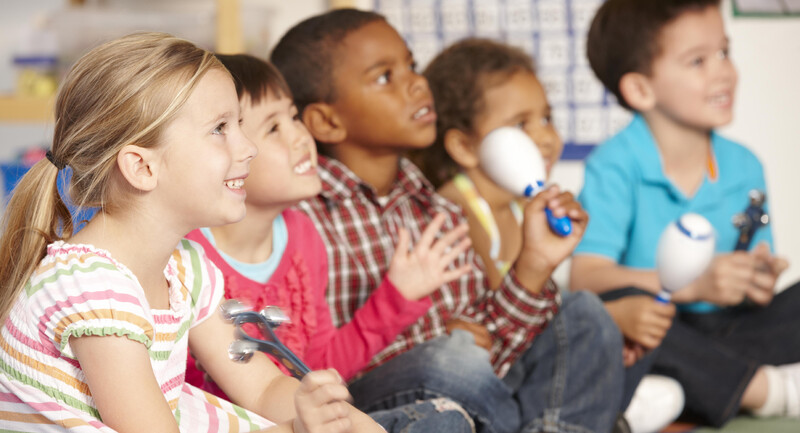This blog post is part of an ASCD partnership with Wonder Media. To see all blog posts from Wonder Media on the 16 Habits of Mind, you can click here.
By the ages 5-7 our kids have already had quite a bit of life experience. For some, their lives up until now have been affirming and safe. For others, things haven’t been so easy. Some little ones already doubt their ability to succeed. Their life experiences have not been characterized by supportive encouragement. They have sometimes suffered ridicule when they have tried and failed. Others may have simply never been given opportunities to stretch themselves and take risks. And some kids just seem a bit timid and we really don’t know why.
My point is that what characterizes a responsible risk for one child can be an insurmountable hurdle for another and a piece of cake for a third. As with almost everything in the classroom, we need to know our kids before we know how best to help them learn.
Watching children during unstructured free time in the classroom or the playground will render much more useful information than observing them during class lessons. Each child has a boundary beyond which they feel uncertain of themselves. As teachers, we need to be looking for that boundary.
These boundaries might be physical boundaries, emotional boundaries, social boundaries, or thinking and learning boundaries. The trick for teachers is to learn where the boundary lies and then provide the support needed for the child to go a little bit beyond. The animated video from Habits of Mind Animations is a great starting point to help children understand what we mean by taking responsible risks.
After discussing the content of the video, ask your students if they know the difference between a responsible risk and an irresponsible risk and if they ever take responsible risks at school. Enmesh the video with their own experiences by incorporating the ideas initiated by the video into what goes on in the classroom every day. Use the vocabulary, point out examples of responsible risk taking as they happen – “Good for you Joe. You took a risk. You weren’t sure you could do that when you started.”
In my composite grade one and two classroom we had a huge range of abilities. Knowing that within any one school year you will likely have children working at three broad levels, this composite class gave me the gift of six levels. This required quite a bit of planning, but it also gave the kids a greater sense of safety. Why? Because they were always shuffling from one group to another in some subject areas, and were presented with many open ended tasks. No child ever got stuck in the bottom group or drifted along in the top group.
Open ended tasks let each child work at an individual level. There is no ‘benchmark’ that every child must hurdle. Benchmarks discourage risk taking because a child either makes it or doesn’t, and if they don’t make it they are deemed to have failed. You can’t actually fail an open ended task. The trick is to ask questions that encourage risk taking, for example, “Have you ever thought …? I wonder what would happen if …?”
Leveled reading is very popular in many classrooms. I always had a problem with this because it discourages risk taking. Testing a child and determining that she is on level 12 might ensure that she reads books within her competence level, but it doesn’t encourage her to choose a more difficult book because the subject fascinates her, the illustrations grab her attention, the paper feels nice or even because it smells good. Having a wide selection of books and magazines in a classroom, through which children can browse and self-select, encourages responsible risk taking. Leveled reading schemes don’t.
Two of the most important and frequently used phrases in my classroom were “have a go” and “not yet”.
Every kid in my classroom was praised for effort in preference to outcome. They were not afraid to ‘have a go’ in case it didn’t work out.
Learning how to write thoughts down is a central part of the curriculum in these early years at school. My children wrote a lot and they frequently wanted to use words that they could not yet spell accurately. Rather than making them rely on predetermined word lists or constantly looking words up in a resource, I would tell them to “have a go”. I wanted them to take a risk. I would then work with individual children as we looked more closely at their writing. We would focus on those tricky words. First, we looked at the letters that were in the right places, and only then did we think about the ones that were not. Only after giving positive feedback for the attempt would the child be shown the correct spelling.
In my classroom there was no shame in “having a go” and getting it wrong. In fact, most times the child didn’t get it entirely wrong. Almost always some part was right and I would highlight that so the child would be confident to take a risk next time. Whenever we take a risk we need to be prepared to deal with the fact that we may not entirely succeed but acknowledge where we did.
For example, a child wrote a short piece about an elephant. We had been reading books about animals and talking about the words, making lists that were posted around the room. The kids chose a favorite animal and wrote what they knew about it. One little boy selected the elephant, but he spelled the word “elefent’. That made great sense if he was focused on the grapho-phonics.
When I looked at his work I circled the letters that were correct and asked him to ‘have a go’ at correcting it himself. We briefly reviewed how he might do that. He remembered the lists posted on the wall and he self-corrected. This boy took a responsible risk – he knew quite a bit about how words were constructed – and his effort was acknowledged. He was also trusted to fix the bits that were not correct.
We need to beware of protecting children from failure. Taking responsible risks makes some degree of failure inevitable. It wasn’t ever risky if it was easily achieved. We are denying children so much when we deny the opportunity to fail, because we are thereby denying them the opportunity to take risks, be resilient, and persist.
When my children were little and we’d visit the playground, I found I was fearful when they took physical risks. I was afraid they would fall or trip. The wisest advice I was given was to take them to the appropriate playground for their ages and then “don’t look”. I trusted them to negotiate their way around the equipment and to take responsible risks.
I worked hard to create a safe environment in my classrooms, one that made children feel both trusted and safe. They knew that if they took a risk and tried they would be praised for what they got right rather than feeling bad about what they got wrong. How often do we give children spelling tests and mark a word as wrong when perhaps five of the letters were correct and only one letter was wrong? How can that possibly encourage a child to take a risk next time?
There is great power in the word ‘yet’. When a child tells me, “I can’t do that” or “I don’t know that”, my response is “not yet”. It confirms confidence that we can all get better at almost anything if we make the effort. “I can’t” should never be the final statement.
Of course, when a child says, “I can’t swim”, replying with “not yet” as you throw her into the deep end isn’t going to help the child learn anything. The risk of drowning or of experiencing overwhelming fear is too great. Risks need to be taken responsibly. And the child needs to have some continuing control in managing the level of risk.
While the overall degree of risk needs to be managed by a skilled teacher, the child needs to feel safe and trusted enough to agree to try, to have a go at something they are not sure they can do yet, children need to know they can ask for help, but they will be expected to have tried to resolve the problem on their own.
I had this poem by Apollinaire on the wall above my desk.
“Come to the edge,” he said.
“We can’t, we’re afraid!” they responded.
“Come to the edge,” he said.
“We can’t, We will fall!” they responded.
“Come to the edge,” he said.
And so they came.
And he pushed them.
And they flew.”
The skill of the teacher is in knowing the children well enough and then judging how far the drop is before pushing.








